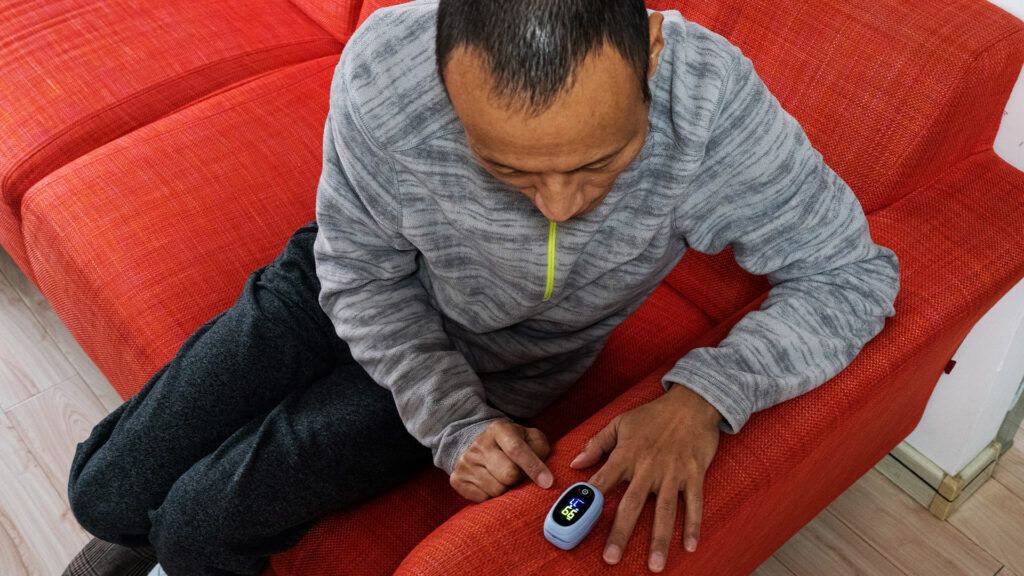Reflex bradycardia is a reflexive response from the autonomic nervous system that causes the heart rate to slow. Triggers may include submerging in cold water or physical pressure on certain body parts.
Bradycardia means that the heart rate is slower than
Slowing down the heart rate may be the body’s way of trying to maintain balance. The autonomic nervous system is responsible for involuntary bodily processes such as heart rate, blood pressure, and breathing.
This article discusses further details about reflex bradycardia and its symptoms, treatments, and causes.

Reflex bradycardia is when a certain stimulus triggers the heart rate to slow down, which can help the body maintain homeostasis.
Homeostasis is when the body’s internal environment remains steady so that external stimuli do not overwhelm certain functions.
It occurs in response to stimuli that cause the parasympathetic nervous system (PSNS) to become more active. The PSNS is responsible for calming the body down.
The main reasons for reflex bradycardia are to conserve energy and balance other changes happening within the body, such as a rise in blood pressure.
Learn more about bradycardia.
The main symptom of reflex bradycardia is a slow heart rate.
Sometimes, the condition can result in certain body parts, such as the brain, not getting the oxygen they need. This can cause symptoms such as:
- dizziness
- fatigue
- chest pain
- feeling faint or passing out
- weakness
- confusion
- shortness of breath
In mild cases, symptoms may either be very slight or not occur.
There are several possible causes of reflex bradycardia. These include the below.
Oculocardiac reflex
Experts define oculocardiac reflex as a decrease in heart rate by more than
Oculocardiac reflex can happen during trauma or surgery. This action can stimulate the vagus nerve in the brain, leading to reflex bradycardia.
Intracranial hypertension
Intracranial hypertension refers to a buildup of pressure around the brain. It can happen for a variety of reasons, including:
- trauma
- stroke
- certain brain conditions, such as tumors or meningitis
Elevations in intracranial pressure in the skull can cause the body to produce a response called the Cushing reflex. This can, in turn, lead to bradycardia. The exact mechanism for how it leads to bradycardia is unclear.
Pressure points
Exerting pressure on certain places of the body, especially where major blood vessels or nerves responsible for regulating heart rate are, can cause reflex bradycardia. This includes the carotid sinus and the trigeminal nerve.
Emotional stress
Emotional responses, such as fear and panic, can activate the PSNS. This process may activate the vagus nerve and cause reflex bradycardia in an attempt to regulate the body’s response to stress.
Immersion in cold water
Someone holding their breath and submerging their head in cold water
It can also lead to constriction of blood vessels in the peripheral parts of the body. Experts believe bradycardia occurs in this situation to put less pressure on the heart and limit oxygen use in the body.
Other names for this are “diving reflex” or diving bradycardia.
If a person is experiencing an atypically slow heart rate, they may need to call a doctor or seek medical assistance.
A person needs to contact a doctor if they have:
- severe or persistent symptoms of bradycardia
- fainted
- chest pain
- an existing heart condition
- risk factors for bradycardia, such as diabetes or being a smoker
- runs of bradycardia and tachycardia, or rapid heartbeat
Anyone with concerns about their heart rate, slow or fast, needs to contact a doctor.
Caregivers should seek emergency medical assistance if their infant has a slow heart rate.
A doctor may conduct
Diagnostic tests may include:
- a physical examination
- taking a medical history
- monitors to assess longer-term heart rate changes
- a tilt table test, which can help identify heart issues that could be causing a person to faint
- echocardiography to examine a person’s heart health
- stress test to examine heart rate as a person exercises
- blood tests
Treatment for reflex bradycardia can depend on the underlying cause of a person’s slow heart rate. In mild cases, interventions
When a doctor identifies the cause of the reflex bradycardia, they may treat the condition by removing the stimulus or helping a person adjust to avoid triggering episodes. This may include changing medication or avoiding certain activities.
Other treatments and remedies for bradycardia include:
- fitting a pacemaker to regulate the heartbeat
- lifestyle changes to promote heart health, such as quitting smoking, engaging in regular exercise, and managing stress
- managing underlying conditions that contribute to bradycardia
Certain triggers and stimuli can cause the heart rate to slow down, which doctors refer to as reflex bradycardia. Certain activities, pressure on certain body areas, and emotional stress can cause it. Sometimes, a person may not need treatment if the bradycardia is mild and not causing severe symptoms.
Making lifestyle changes, avoiding certain activities, and identifying triggers for reflex bradycardia can help resolve this issue and alleviate symptoms. If a person is experiencing severe or ongoing symptoms or has concerns about their slow heart rate, they should contact a doctor immediately.
